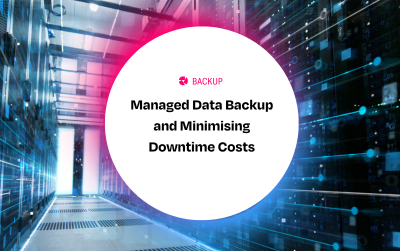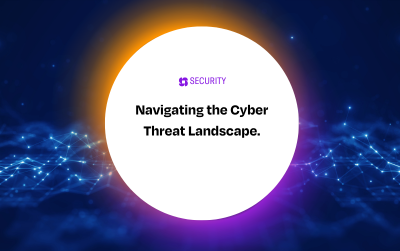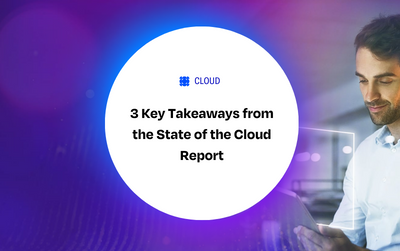Building a Resilient IT Infrastructure
In the rapidly changing digital terrain of 2024, the strength of IT infrastructure has evolved beyond a basic operational requirement to become a key strategic advantage that sets businesses apart. As enterprises grapple with challenges such as escalating cyber threats and rapid technological advancements, building a robust and resilient IT infrastructure has become imperative for maintaining business continuity, safeguarding data, and ensuring operational efficiency.
Understanding IT Resilience
At its core, IT resilience refers to an organisation's ability to maintain essential functions and quickly recover in the face of any disruption, be it cyberattacks, natural disasters, or system failures. Unlike traditional disaster recovery, which primarily focuses on restoring IT operations post-disruption, IT resilience is about proactively designing systems to prevent disruptions and mitigate their impacts.
The journey towards IT resilience begins with a thorough assessment of your current infrastructure. This involves evaluating the resilience of existing systems, identifying vulnerabilities, and pinpointing critical areas for improvement. A comprehensive risk assessment can highlight potential threats and help prioritise efforts to bolster resilience.
Best Practices for Building IT Resilience
-
Regular Updates and Patch Management: Keeping all systems up-to-date with the latest security patches is crucial in today's rapidly evolving digital landscape. By regularly updating software and systems, organisations can stay one step ahead of cyber threats and vulnerabilities, ensuring a robust defence against potential attacks. These updates not only enhance security but also improve system performance and reliability, contributing to overall operational efficiency.
-
Diversification of Data Storage Solutions: Embracing a variety of data storage solutions, including on-premises, cloud, and hybrid options, is essential for building resilience in IT infrastructure. This diversified approach ensures that data remains accessible and secure, even in the face of unforeseen disasters or disruptions. By spreading data across multiple platforms, organisations can minimise the impact of localised incidents and maintain seamless operations under any circumstances.
-
Robust Data Backup and Recovery Strategies: Establishing comprehensive backup and recovery strategies is a cornerstone of IT resilience. Regularly tested backups, coupled with clear and well-defined recovery protocols, play a critical role in minimising downtime and preventing data loss. By prioritising data protection and recovery preparedness, organisations can swiftly recover from any disruptions and maintain continuity in their operations.
-
Investment in Predictive Analytics: Harnessing the power of predictive analytics can revolutionise threat detection and response capabilities within an organisation. By leveraging advanced analytics tools, organisations can proactively identify potential security threats, predict system failures, and automate rapid responses to mitigate risks. This proactive approach to security not only enhances resilience but also significantly reduces the likelihood of disruptive incidents impacting business operations.
Leveraging Emerging Technologies
The integration of AI and machine learning into IT resilience strategies opens up a realm of possibilities for predictive analytics and proactive threat mitigation. These advanced technologies can not only automate threat detection but also analyse patterns and behaviours to anticipate potential system failures before they occur. By leveraging AI and machine learning, organisations can stay ahead of the curve and respond swiftly to emerging threats, bolstering their overall resilience.
Additionally, the utilisation of blockchain technology presents a ground-breaking solution for enhancing data security and integrity within IT infrastructure. Blockchain's decentralised and immutable nature provides a secure and transparent framework for data management, ensuring that sensitive information remains protected from unauthorised access or tampering. By incorporating blockchain technology into their resilience strategies, businesses can fortify their defences against cyber threats and establish a trusted environment for data storage and transactions.
Creating a Culture of Resilience
Fostering a culture of resilience within the organisation goes beyond just training and awareness programs for staff. It involves creating a mindset where every employee understands the importance of cybersecurity and actively contributes to maintaining a secure environment. By instilling a sense of responsibility and accountability in every individual, organisations can build a strong foundation for resilience.
Additionally, promoting a culture of open communication and collaboration is essential for addressing security threats effectively. Encouraging employees to report any suspicious activities or potential vulnerabilities can help in early detection and mitigation of risks. By fostering a sense of teamwork and collective responsibility towards cybersecurity, organisations can create a united front against evolving threats.
Finally, developing a comprehensive business continuity plan that integrates IT resilience ensures that the organisation is well-prepared to handle any disruptions. This plan should not only outline specific steps to be taken in case of a cyberattack or system failure but also include regular drills and simulations to test the effectiveness of the response strategy. By continuously refining and updating the business continuity plan, organisations can adapt to new challenges and emerging threats, ensuring readiness for any scenario.
As we navigate through 2024, the importance of building a resilient IT infrastructure cannot be overstated. By adopting a proactive approach to resilience, leveraging cutting-edge technologies, and cultivating a culture of preparedness, enterprises can safeguard their operations against an array of threats. In doing so, they not only protect their assets and data but also secure a competitive edge in an increasingly uncertain digital world.
Building IT resilience is not a one-time task but a continuous process of adaptation and improvement. By following these best practices, organisations can ensure that their IT infrastructure is robust, resilient, and ready to support their strategic goals in 2024 and beyond.




